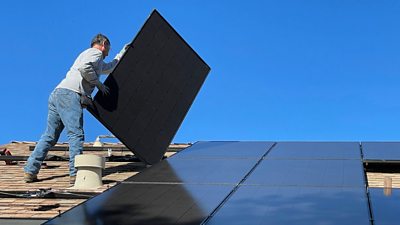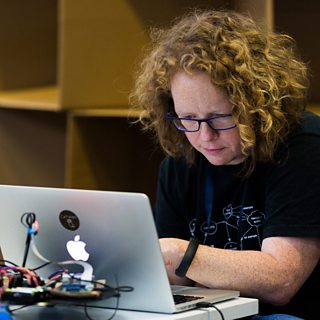The R&D Futures project develops our ability to pick up on trends in audience habits and their media and technology landscapes. We try to extrapolate how these trends might play out over the next few years and how R&D and the ΒιΆΉΤΌΕΔ might respond.
One of the ways we do this is by gathering links to things that we think look like signals of changes in the world and periodically bundling them together for analysis. This is our bundle for July 2021!
The project is run by Libby and Henry and a rotating crew of colleagues from across R&D and the wider ΒιΆΉΤΌΕΔ. If you're interested in collaborating with us, get in touch!

The aura of community, but not the inconvenience of it
Peloton has had a good pandemic, rising from 1.6m subscribers in Q1 2020 to 4.4m in Q2 2021. Itβs basically an exercise bike with a TV strapped to it, but also much more than that - it has a media strategy - akin to an influencer strategy - around its live, heavily data-orientated, personality-led exercise classes, where the instructor can see aggregate and individualised stats and you only see them.
"Without [the stars], there is no Peloton. They are tremendously valuable and, at least within the Peloton universal, meticulously individualized. Jess King is a rave kid. Alex Toussaint is the drill sergeant. Robin ArzΓ³n gives you type-A tough love....β
This illusory form of company / community / presence, coupled with high levels of telemetry (personal health data surveillance), and off-the-shelf choice of people-experiences like brands of biscuit, seem to point in interesting directions. And seems very 2021.
Decentralising energy
In an interview, the CEO of Bulb (a relatively new UK energy company) says:
βIf people had solar panels on their roof, or if they had a battery in their home or an electric vehicle and those batteries were plugged into the grid, the homes could at times be providing energy into the grid. Also, the grid becomes more efficient when the electrons travel a shorter distance,β he added. βIf you have generation embedded within the grid locally, then the whole system becomes more efficient.β
There are already movements towards , partly from a backlash against βdigital monopolies and surveillance capitalismβ and partly as a move back to the Webβs originating principles. Itβs interesting that a similar thing could be happening in the energy industry, with solar and large batteries enabling much more local generation, storage and distribution of energy. Even the National Grid could be disappearing.
New technologies are enabling this move, but what are the forces driving it? Is it a backlash against monopolies and ultra-large companies? A need for more local-ness and community?
Heatwaves in North America
This month, temperatures in the Pacific Northwest of North America hit record highs, and stayed there.
Something about the way this heatwave hit large urban areas seems to have changed the way that itβs been reported and thought about in news and social media, compared to, say, wildfires in California or Australia. This is a heatwave that has significantly affected our built environment and infrastructure, not just the natural environment.
The of Portlandβs tram network in the heat, for instance, has led to some commentators thinking about the knock-on effects of an altered climate. Meredith Whittaker, an AI researcher, : βWhen people ask me about my "AI in 20 years" predictions [β¦] my only response is that I doubt the necessary infrastructure will function/be available to support AI--as we define it now--in 20 yearsβ
Thereβs some signals around community organisation, too, with reports of people sharing air conditioners with their neighbours and informal, local networks of people, enabled by social networking, to provide peer-to-peer relief to fill the gaps in more formal disaster relief programmes. Weβve seen similar models of community mutual aid in the early stages of the coronavirus pandemic last year, both here in the UK and around the world.
Some of our colleagues in R&D are already doing important work modelling the environmental effects of the ΒιΆΉΤΌΕΔβs current television, radio and online output and making recommendations for sustainable engineering practices. Do we also need to think about possible shifts in audience behaviour towards more community-centred activity, and how we might support that?
Continuing trends
- The global semiconductor shortage continues to disrupt production of, well, anything which requires a chip. The story has taken - analysts believe that counterfeit chips (crudely recycled, or badly made clones) are beginning to flood the manufacturing market as production managers become desperate to keep the lines going. If this continues, will we see a slowdown in consumer tech product launches? Will we see those that are released becoming noticeably unreliable? Itβll be interesting to see what is like next year.
- The global shipping crisis continues, with shortages of everything from building supplies to trainers and home furnishings. The reasons for this are - itβs not just the result of the pandemic, but also slowed production in the manufacture of containers themselves, backlogs at ports and fewer ports around the world able to service the new behemoth container ships that are being used by shipping companies.

